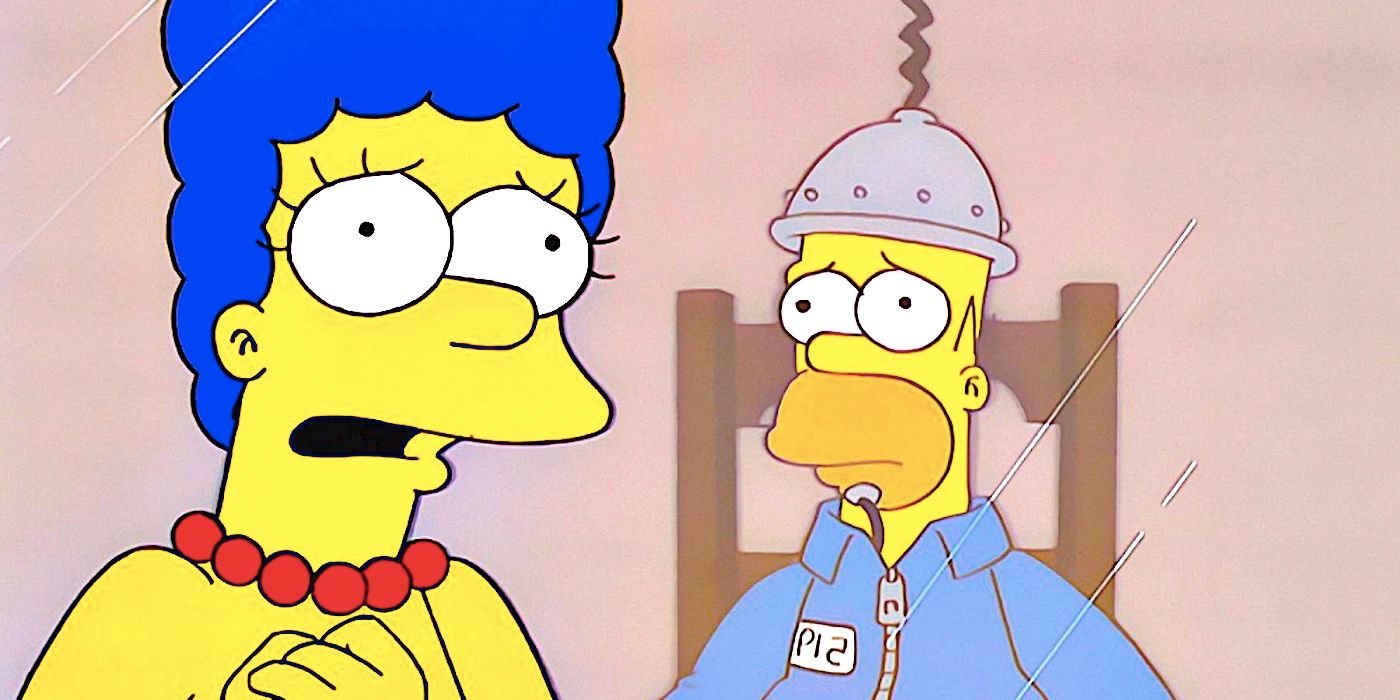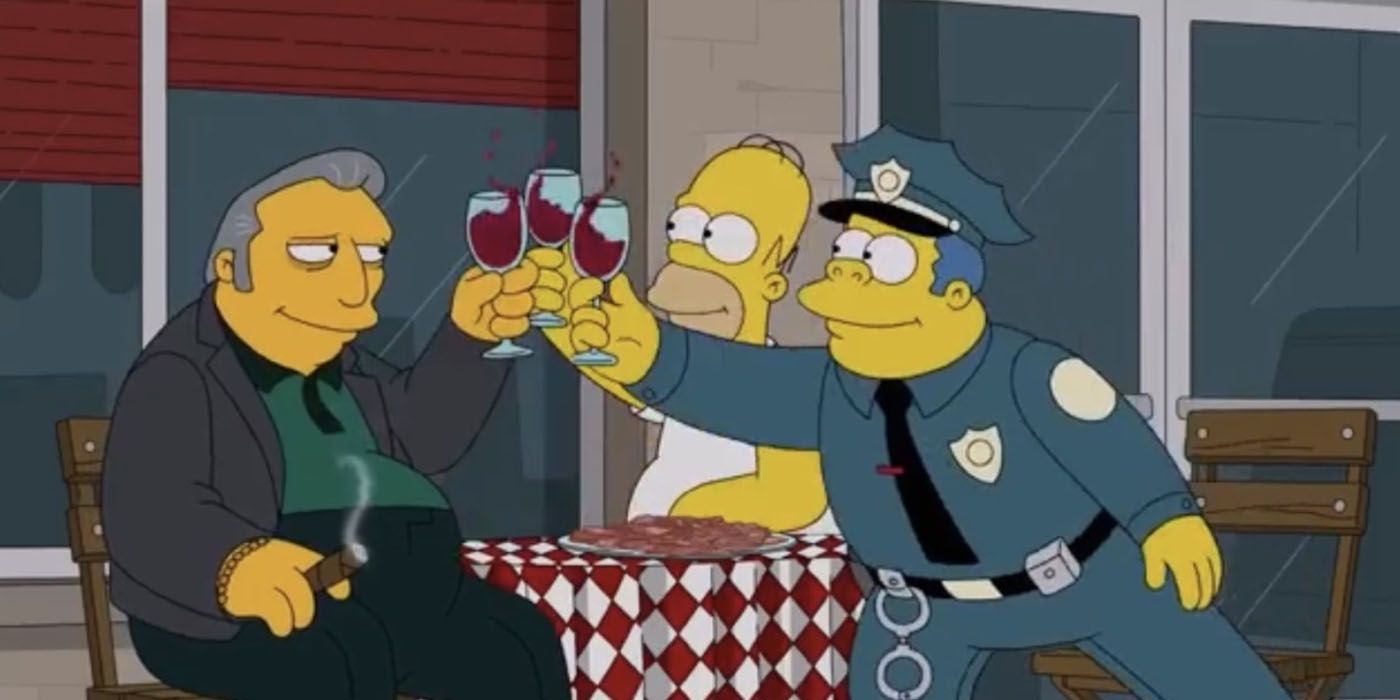WARNING: This article contains SPOILERS for The Simpsons season 35 premiere.
Summary
Although Homer Simpson is usually seen as the ostensible hero of The Simpsons, the show’s season 35 premiere made the wise decision to change this dynamic. After over thirty-four years on the air, Homer Simpsons has transcended the status of a popular television character and become a full-blown pop culture icon. The lazy, dim-witted, selfish, but ultimately good-natured patriarch of the Simpson family has inspired the likes of Family Guy’s Peter Griffin, Bob’s Burgers’ Bob Belcher, and American Dad’s Stan Smith, and even the legendary author Thomas Pynchon once claimed that Homer was his “Role model.” Despite this, Homer isn’t always a heroic figure.
While Homer usually tries his best, he has plenty of character flaws that make him relatably human and frustratingly thoughtless in equal measure. This was taken to an extreme in later seasons of The Simpsons, with some online commentators bemoaning the advent of “Jerkass Homer.” Luckily, The Simpsons season 35 found the right balance between Homer’s original characterization and his more extreme late-season self in the show’s premiere. In The Simpsons season 35, episode 1, “Homer’s Crossing,” Homer starts out as the hero of the show and gradually becomes the episode’s villain, a successful series trend that has its origins way back in 1990’s season 1.
The Simpsons Season 35 Episode 1 Made Homer Its Villain
In The Simpsons season 1, episode 4, “There’s No Disgrace Like Home,” Homer first became the show’s inadvertent villain when he branded his family “Pathetic” after they embarrassed him at a company picnic. At first, this plot made Homer pretty sympathetic as the rest of the family seemingly went out of their way to make him look bad. However, by the time Homer was berating the Simpson clan and subjecting them to electroshock therapy, it was clear that he was the problem. Similarly, the season 35 premiere made him a villain only after first making viewers sympathize with his plight, as many classic episodes have done before.
The plot of “Homer’s Crossing” initially ran into a late-season problem The Simpsons often faces, as the episode focused on Homer’s shortcomings at work. However, things improved when the outing saw him become a crossing guard, then a viral sensation when he saved Ralph from a car accident. Almost immediately after this, Homer turned into a corrupt, power-hungry zealot and The Simpsons used his greed and apathy to satirize police overspending as he demanded more money and equipment for the militarized crossing guards. Like many classic episodes of the series, “Homer’s Crossing” worked because the episode focused on the show’s hero and not a minor character.
Homer’s Villainous Turn Let The Simpsons Satirize The Police
Homer’s abuse of his budget was clearly analogous to police overspending, as repeatedly noted by Chief Wiggum. However, since Homer is the main character of The Simpsons, “Homer’s Crossing” could delve into the logic behind his greed instead of painting him as a caricature. Homer viewed his job as one of The Simpsons’ classic action movie parodies, acting as if crossing guards needed surveillance satellites and machine guns to manage crosswalks. This was a silly exaggeration, but it felt believable and in character for Homer. In contrast, weaker satirical episodes of The Simpsons like season 34, episode 16, “Hostile Kirk Place,” fell flat because their lead characters weren’t relatable or funny.
Why Homer’s Villain Stories Work So Well
From season 9, episode 22, “Trash of the Titans,” to season 5, episode 11, “Homer the Vigilante,” episodes where Homer acts as the villain allow The Simpsons to humanize the target of its satire while still criticizing their behavior. “Homer’s Crossing” and “Homer the Vigilante” both saw Homer turn into a fascistic bully overnight, but both plots kept the character’s innate likability intact. By first grounding the source of Homer’s insecurities in his sense that he was useless and incapable, these episodes made his slide into villainy believable, and funny, even if they weren’t justified. The Simpsons season 35 revisiting classic episodes was risky, but it paid off.
The show’s thirty-fifth outing has to walk a tightrope between making Homer mean enough to be funny, but not so unpleasant that viewers won’t root for him. This is a tall order but “Homer’s Crossing” makes a promising stab at it. Early in the episode, even the most hard-hearted fan would feel for Homer’s situation while, by the outing’s ending, no one could deny that he needs to be kept far away from any positions of authority. Maintaining the flaws that make Homer funny while also staying true to the charm that makes him a hero is hard work, but The Simpsons season 35 can pull this off.
New episodes of The Simpsons air Sundays on Fox.










